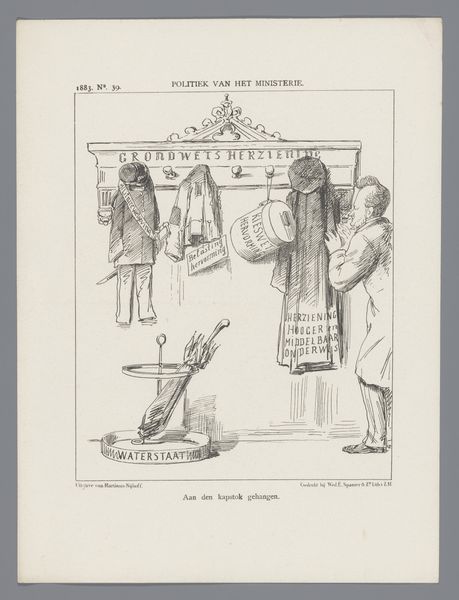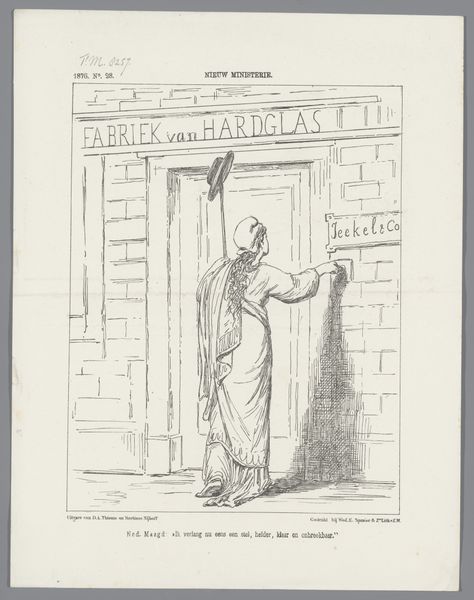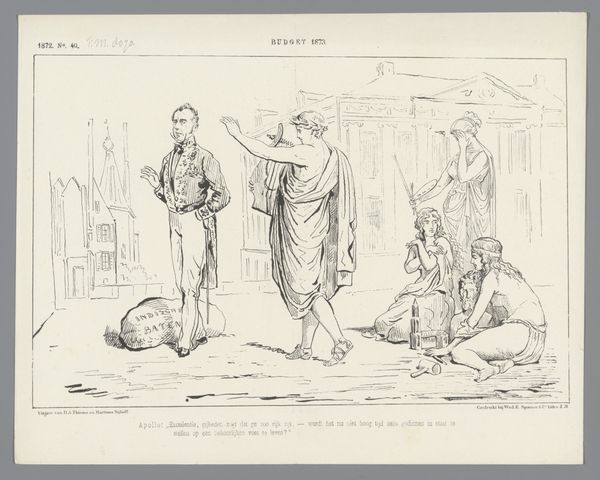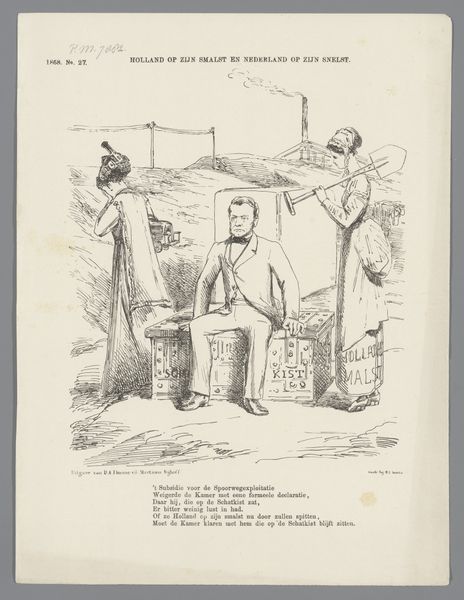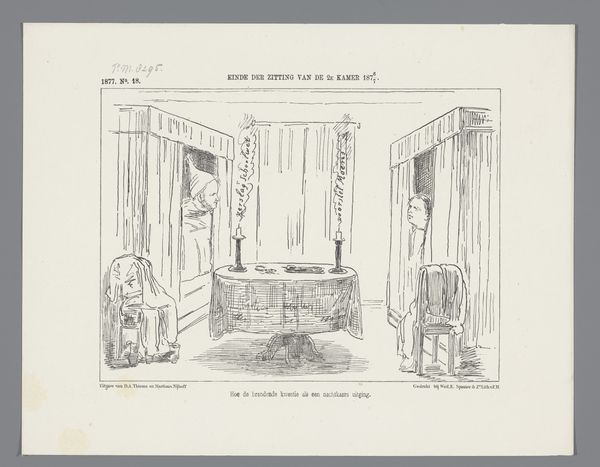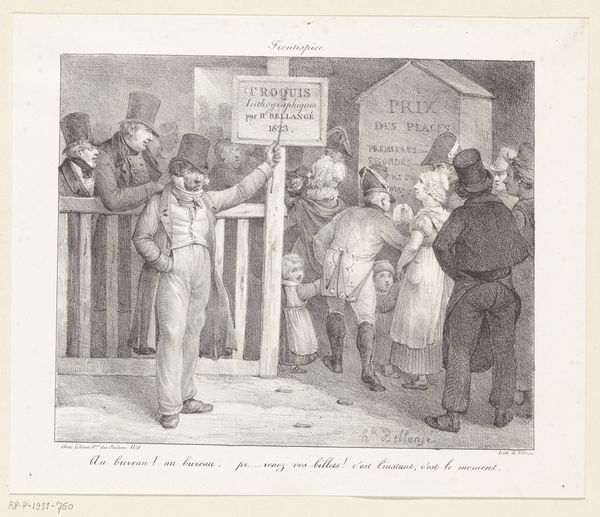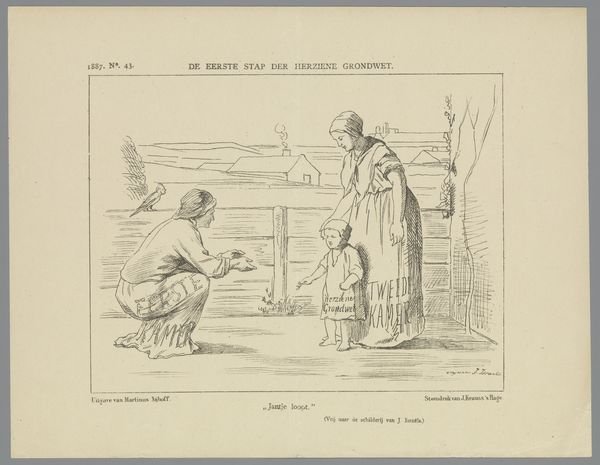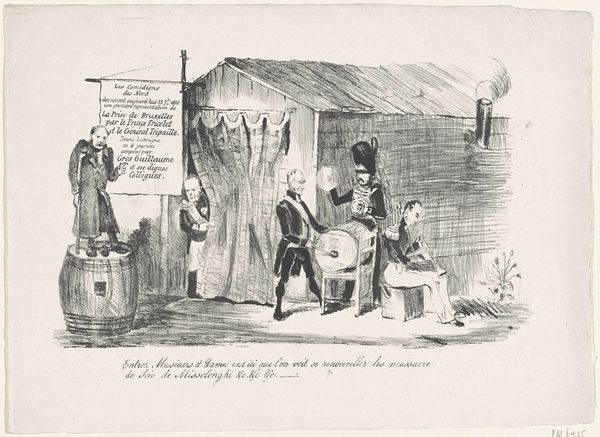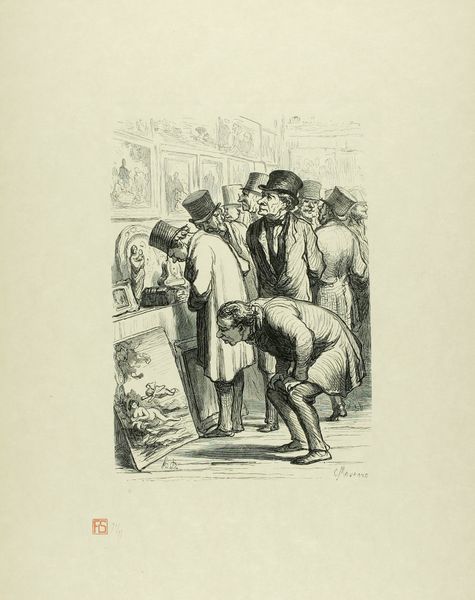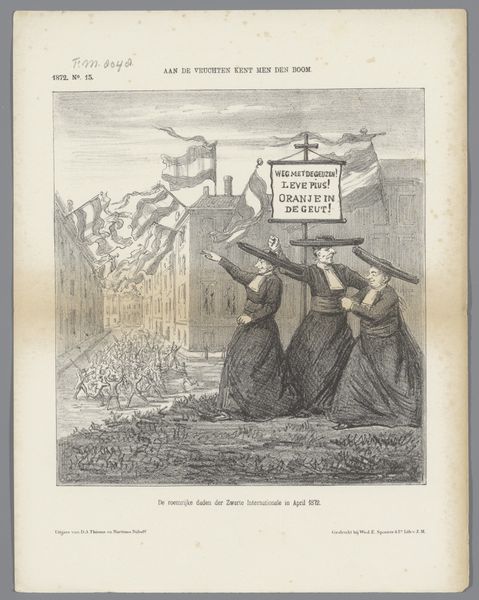
drawing, print, ink, pen
#
drawing
# print
#
caricature
#
ink
#
pen-ink sketch
#
pen work
#
pen
Dimensions: height 215 mm, width 275 mm
Copyright: Rijks Museum: Open Domain
Editor: Here we have a pen and ink print from 1866 called "Spotprent op Thorbecke en Van Heukelom," by Johan Michaël Schmidt Crans. It's a political caricature, and it looks to me like the artist is trying to say something about opposing political figures... What catches your eye in this work? Curator: Immediately, the materiality strikes me. It's not just that it's a pen and ink print, but that this very process allowed for widespread dissemination and consumption. This speaks volumes about how political opinions were formed and circulated. Also, the act of caricature itself – how does this 'pen work', with its ability to exaggerate, play into class divisions and power dynamics in 1866 Netherlands? Editor: That's fascinating. So the medium itself is part of the message? I hadn't thought about how easily prints could be shared. Curator: Precisely. And what about the labour involved? Someone had to create the image, someone had to print it. Who were these people, and what was their social position? How does this affect their perspective and interpretation of political actions? Does the text printed along the bottom further shape its reach and appeal? Editor: That makes me see this piece completely differently! I was just focusing on the politicians being depicted. So, by thinking about the materials and the labor, we're really looking at the artwork as a product of its time and of specific cultural and economic forces. Curator: Exactly! Consider the title mentioning ‘Spotprent’— the context highlights not just the creation, but the consumption and distribution that gave a voice to broader public sentiments, blurring the boundaries between art and social commentary. What began as craft is reconfigured as political critique through the sheer materiality of production and accessibility. Editor: This really highlights that appreciating art isn't just about aesthetics, but understanding its place in a complex web of social relationships. Thanks!
Comments
No comments
Be the first to comment and join the conversation on the ultimate creative platform.
